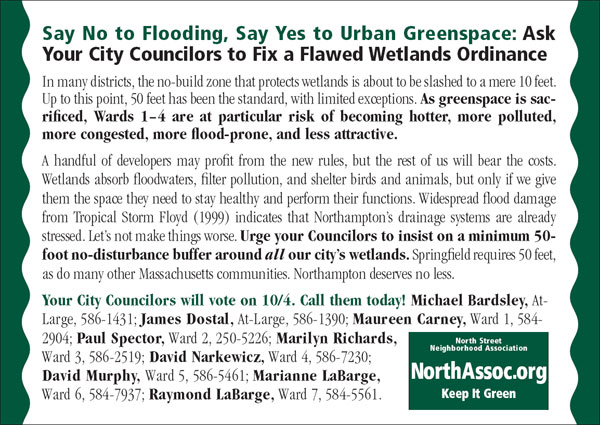Robert H. Kuehn Jr., a champion of affordable housing and mixed-use developments, contributed “Thinking Like a Developer” to Preserving and Enhancing Communities: A Guide for Citizens, Planners and Policymakers (2007). Kuehn discusses brownfields revitalization, avoiding acrimony, and a common developer mistake that drives density (p.42-51):
A key issue is whether the property to be developed was (or will be) acquired for a realistic price or not. If a developer stretches too far to acquire a prime property, this initial decision is likely to drive the density required to absorb the acquisition costs… Many of the tensions in the approval process emanate from the purchase of a site at an overly optimistic price in anticipation of favorable zoning. I have often passed on sites that I would have loved to develop because I knew the acquisition cost was excessive and would force subsequent design decisions that would be hard to justify…
Given that we live in Massachusetts, an older, urbanized state, many properties have been put to previous uses that have caused various levels of contamination. Environmental regulations create onerous liabilities for even the good guys who are trying to clean up such past sins, so many of these sites have lain fallow because of the costs and complications. Happily, the state’s Brownfields Program provides new tools to deal with these compromised sites, offering technical assistance, limits on liabilities, and environmental insurance. Such insurance can be critical in bringing relative closure to contamination issues, which is otherwise difficult to accomplish under the state’s environmental regulations…
The more a given development proposal is in keeping with the character of the community and otherwise complimentary to that community’s own purposes, the more likely the proposal will be accepted. Therefore, the first decision about the site selection is a critical one for any development initiative… (I have found that the adaptive reuse of historic structures is often more readily accepted, in part because the building already exists, so there is less risk about what it will look like.)
…Recently, communities have started to raise fiscal defenses… that the city or town does not want any new development that does not cover its own costs, especially housing which could bring more children to the local schools. If a community chooses to close its borders to new residents, I really do not have a good antidote as a developer. These issues require a broader state policy resolution of local aid or real estate taxes to level the playing field and allow growth to occur in a fair and sustainable manner across the state.
…[For a specific project,] I weigh the likely chances of success against the level of effective opposition. Ultimately, I will voluntarily withdraw a proposal rather than engage in protracted, unpleasant wrangling.
See also:
Photo Essay: Our Woods in Winter
Protecting open space is often about protecting what makes a community special and unique… At the small-town or village scale, a forested hillside or surrounding farmland helps create a unique sense of place. Furthermore, preserving open space helps to create distinct edges that stop the blurring of community boundaries that is characteristic of urban sprawl. Defining what is unique about one’s community and identifying places that are special to local residents is an important part of the overall planning process (Hester 1990)…
1991: Zoning Board of Appeals Member Vetoes Proposed Multi-Family Project as Out Of Character for Woodmont Road Environs
Announcing his vote, Brushway said he was against the project because the multi-family dwelling would be out of character with what he described as a neighborhood of “predominantly” single family homes, “especially in the immediate neighborhood.”
[Today, of course, we are faced with Kohl Construction’s proposal for 26 condo units in the area bounded by North Street and the bike trail–several times the scale of the project rejected in 1991.]
Our Column in Today’s Gazette: The Hidden Risks of ‘Smart Growth’
The Portland, Ore., metro region is considered a smart growth pioneer, going back to the early 1970s. Portland adopted urban growth boundary restrictions to preserve open space outside the boundary. Transportation initiatives have emphasized public transit over road-building.
Problems emerged, however. With space restricted for building, home prices soared. By 1999, the Portland region was the eighth-least affordable housing market in America, according to the National Association of Home Builders. Pressures for development threaten the remaining greenspace within the boundary: 10,000 acres of parks, fields and golf courses have been rezoned for infill.
Many homebuyers, especially those with children, began to avoid Portland in their quest for affordable, conventional homes with yards. This ironically fostered sprawl (PDF) and traffic as people migrated to cities outside the region’s authority, such as Vancouver, Wash…
Taking the long view, we are concerned that smart growth could gradually transform Northampton into a community that’s inhospitable to families with young children. It’s easy to see how they might pack up for Easthampton, Hadley, or other surrounding towns. Children do cost Northampton money, particularly when it comes to public education, but young families infuse the city with energy and variety, and children with fond memories and deep local roots grow up to be adults who will care for Northampton in the future. That, to us, is true sustainability.
Press Release: Northampton, MA Citizens Campaign to Protect Their Urban Wetlands, Prevent Flooding; 16,978 Postcards Mailed to Voters
Postcard as mailed to Northampton voters earlier in the fall. The new wetlands ordinance benefits developers who own property next to wetlands. The land owned by Kohl Construction behind North Street is such a property.

Syd Gernstein: “Brownfields Revitalization Cuts Urban Blight, Suburban Sprawl”